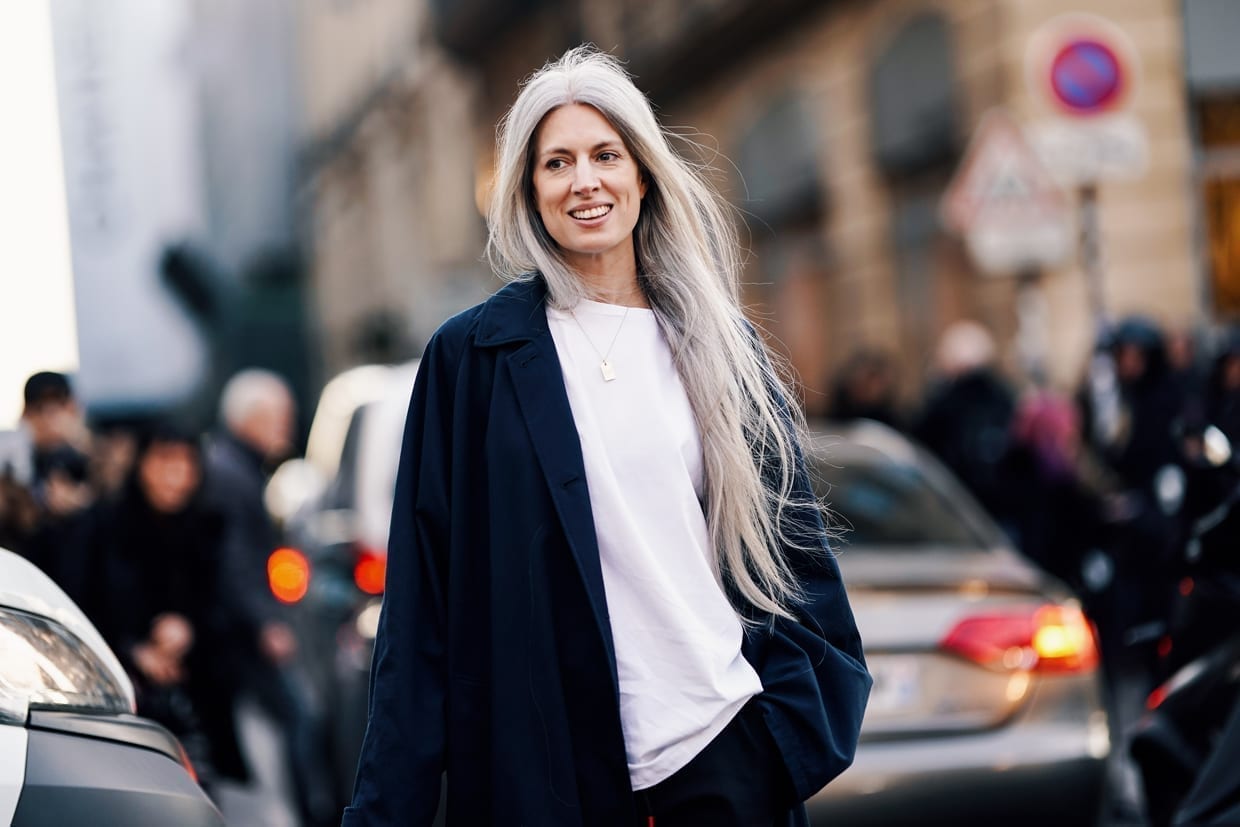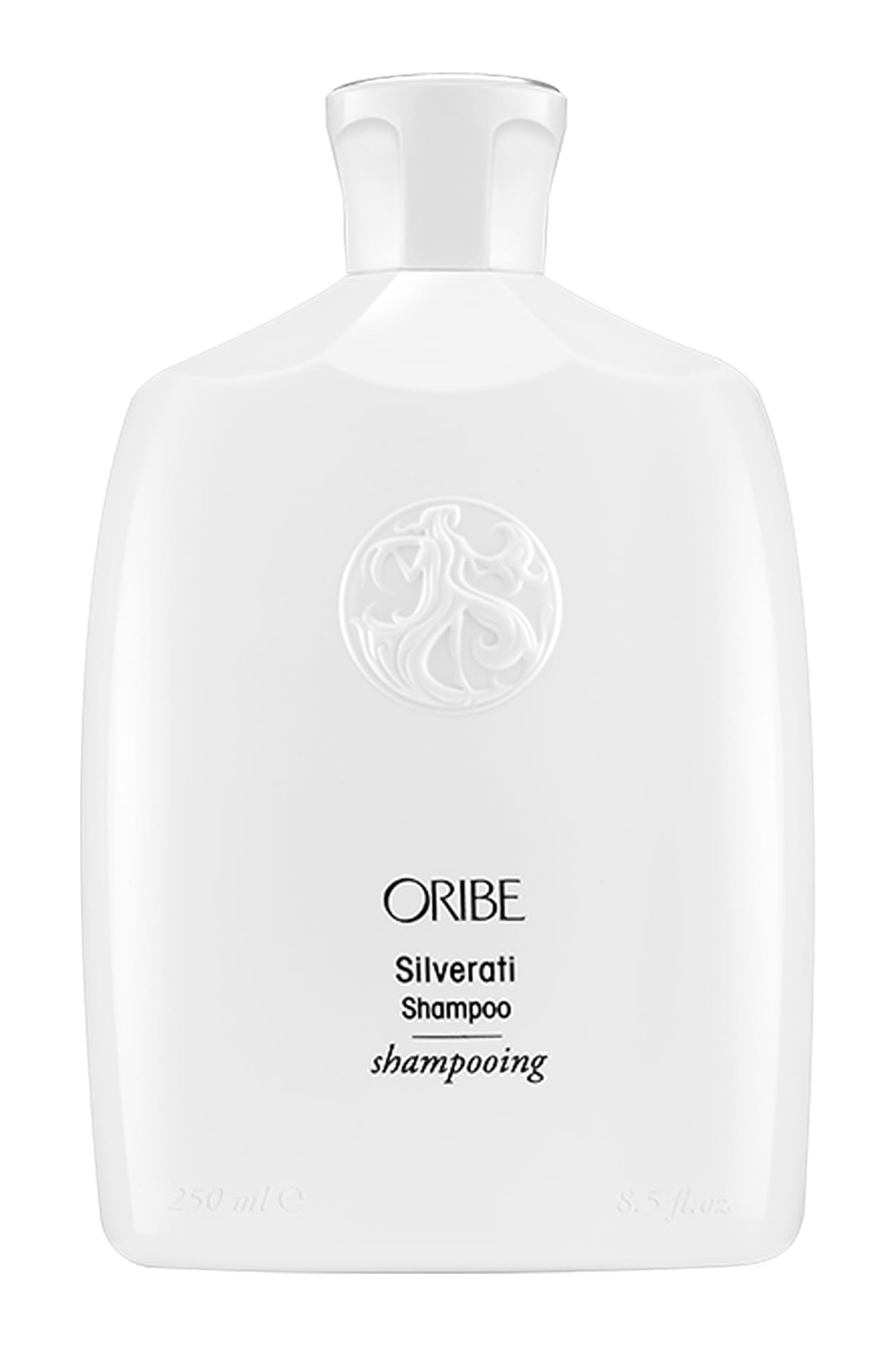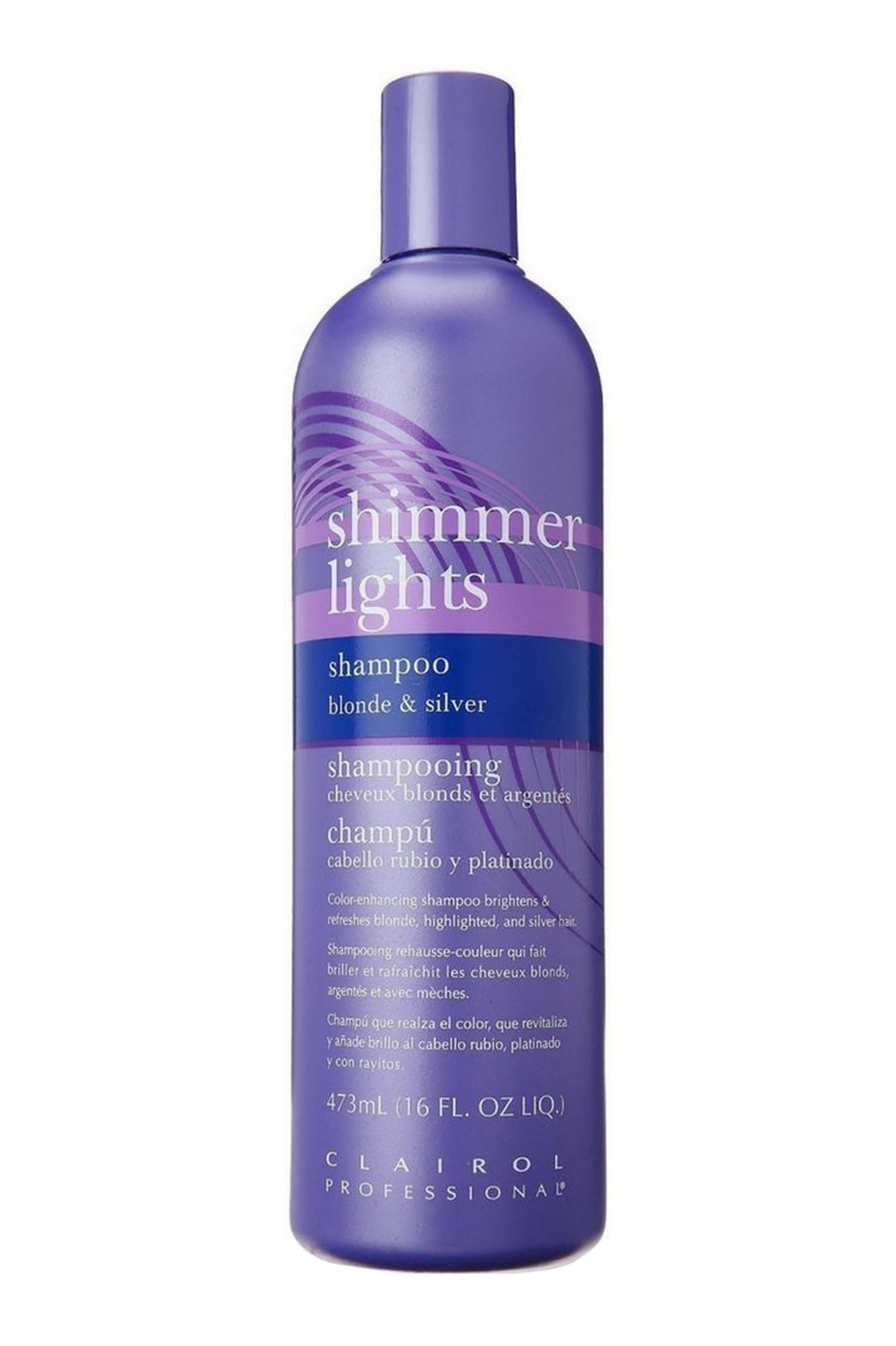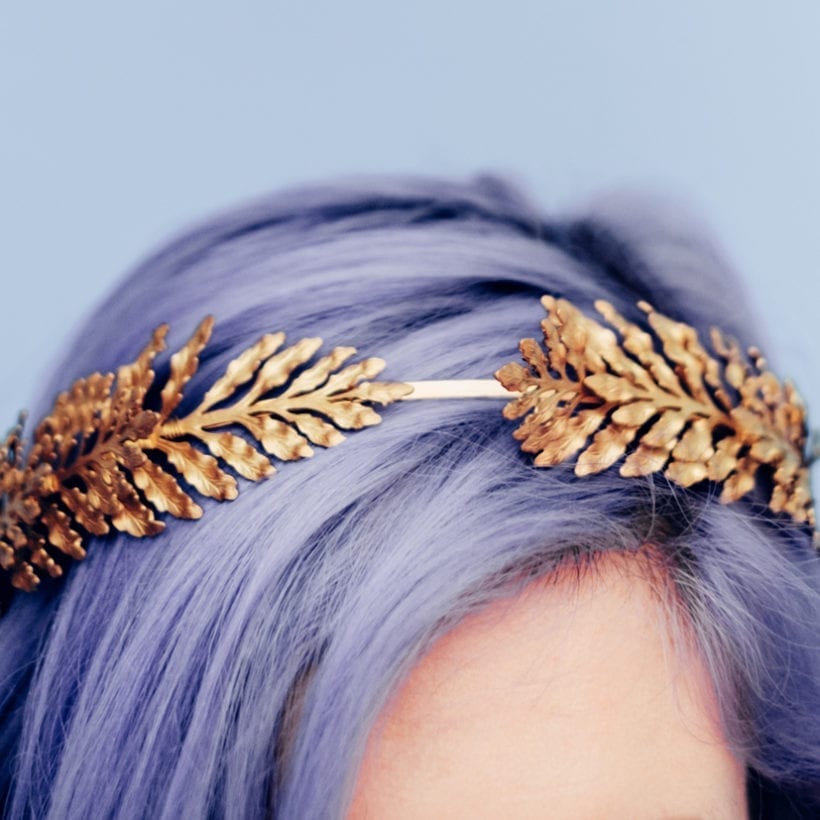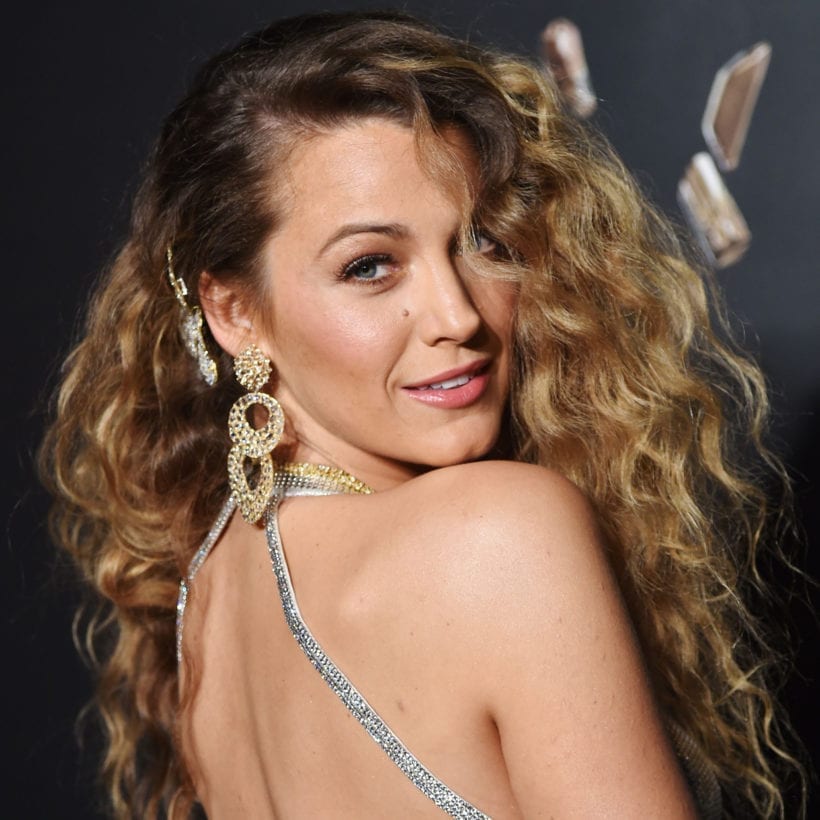There has never been a better time to go gray — no matter your age. Over the past few years, the gray hair trend — both dyed and natural — has become more “in” than ever, with celebrities including Kim Kardashian, Lady Gaga, Pink and Rihanna rocking the #GrannyHair look.
And whether you are considering going back to your natural color or transitioning to a completely new hue — the two types of clients are those who want to grow out their natural hair, which is all or partially gray, and those who want to rock the new-age trend of silver hair — it is most certainly a labor of love.
Going gray (whether natural or dyed) is not something that you can do in a day and definitely requires patience. Lauren Paglionico, hairstylist and founder of LRN BEAUTY salon in New York City, has many clients who can’t wait to naturally go gray in the hopes that their hair will change over time to a beautiful white; however, she explains that this isn’t always possible. “Genetics play a big role and not every one’s hair turns white, so many women end up with a large percentage of gray hair blended with their natural color,” she explains.
Once you have made your decision to transition to gray — and are aware that it will be a process in and of itself — here is how to do it as gracefully as possible, according to stylists.
If You Are Going Gray Naturally
https://www.instagram.com/p/BqqDl17Hv_T/
Know the look you’re going for
If you are toying with the idea of letting your hair color grow out, Paglionico suggests considering what the benefits will be. Is it easier to maintain? Less damaging? A way to save extra money each month? Less of a burden and less frequent salon visits? One particular benefit to embracing natural gray hair is that it allows you to treat your hair (and Mother Earth) the healthiest way possible — no more chemical treatments needed. “Individuals who live a green and healthy lifestyle often keep away from coloring their hair, but it can also be a financial choice because the upkeep of chemical hair color will cost more money than a simple haircut,” says master stylist, Linda de Zeeuw, from Rob Peetoom salon in Brooklyn, New York. “And there are the ladies with the beautiful natural gray hair who have been coloring their hair for decades, and now want to embrace the gray because it looks more natural.”
Even if you are on the fence about going gray, it is important that you first think about whether or not you want to keep the gray, blend it or cover it up completely. “It’s a question I get asked daily by many clients of all ages, not just the older ones,” says NYC-based master hair colorist, Stephanie Brown. “The good news is that there are plenty of ways to make the transition an easier one, so you need to be willing to talk with your stylist about all your options and what best suits your lifestyle and budget.”
Opt for a shorter ‘do
One of the easiest ways to grow out of your gray is to opt for a shorter cut. “The silver will naturally blend in with your hair color as your hair grows out and requires less maintenance than longer hair,” says Brown. “Your stylist should also be able to do a subtle ‘color correction,’ but instead of correcting it your natural or go-to dyed color, it should look more like the gray shade growing in.” For those with dark brown or black hair, however, she says it’s a much longer process. “For the first six months, I usually need to pull through some highlights to blend the gray, then toner can be added to further blend it in every six weeks or so during the growing-out phase.”
Amp up the hydration
One unpleasant side effect of gray is a lack of hydration — which is why there is no time like the present to invest in good moisturizing masks and styling products. Brown suggests looking for ones that are free of sulfates, alcohol and other drying ingredients. “Thankfully there are plenty of shampoos, conditioners and glazes, such as Oribe Silverati Shampoo, that are designed to enhance the luster and add hydration to naturally gray and white hair you can find at most drugstores or online,” she says. “A keratin treatment will also help get rid of that unwanted frizz and give you a sleek look that’s very easy to style.”
Consider subtle highlights
If you want to baby step into going gray, Paglionico recommends having your colorist paint in highlights or lowlights to blend your gray rather than covering it completely. “This will soften the demarcation line as it grows out,” she explains. “Some women have hair that grows in white around the temples and hairline and prefer to enhance that rather than cover it up. We can be playful in the back and highlight it with various shades or cover it dark making the look more striking like Daphne Guinness.”
If You are Dying Your Hair Gray
https://www.instagram.com/p/BlS-Kk1HHjh/
Don’t try this at home!
Even if you are on a small budget, experts recommend against opting for at-home coloring processing kits, especially when you are trying to go gray (naturally or not). It is best to leave it up to a trained professional. “I’ve seen one too many botched color jobs in my career,” says Brown. “At-home chemical color is a lot easier to mess up than do right — leave that to your stylist instead.”
Get your pre-colored hair as light as possible
The key to going gray without traces of the natural color blended in is to get the pre-colored hair as light as possible — almost white blonde to be able to tone it in a silver/ash blonde, according to de Zeeuw. “This can be done with either highlights or full lightening service, depending on the length and the quality of the hair,” she says. “With every step, we can make the decision to either color the roots one shade lighter than the formula of the previous color service or use a few lowlights to blend the color of the lengths with the roots.” This makes it possible to go even lighter at each of your next appointments until you have reached the lightest blonde possible. Then you can tone the hair with a silver/gray color gloss.
Balance brassiness
Also like blonde, gray hair can get brassy and turn different colors overtime from exposure to the sun and other factors, so it needs to be maintained with a purple-rinse shampoo and conditioner that fights brassiness. Brown suggests starting this routine immediately after your first coloring process is complete. “Using purple-toned shampoos, such as Clairol Professional Shimmer Lights Shampoo Blonde & Silver and Kristin Ess The One Signature Shampoo, are great options, as they work to neutralize yellow tones and balance out the brassiness. It also keeps the gray a beautiful silver shade,” she adds.
How much will it cost to go gray?
If you are returning to your natural gray, it really depends on your desired length, amount of hair and the darkness of your existing chemical hair color, according to de Zeeuw. “If you have short hair with dark blonde hair color, you could lift this up to a very light blond and tone it gray or silver with a double process (bleach and tone). This price would be $250+,” she says. “If you have long, dark brown colored hair, we would suggest a step-by-step plan to make the hair gradually lighter with highlights, which would take at least three sessions of full highlights and toners in six-months time, with a total cost of $1,000+.”
If you have virgin hair that is completely uncolored and you are looking for a Kim K kind of gray, the factors affecting price are quite similar: length and the darkness of the hair. “A double process with toner will be the go-to service in long hair that needs to be done twice on the same day, which will easily cost $200 per process, totaling at least $400,” says de Zeeuw. “Then, to maintain the health of your hair, you’ll need in-salon treatments and professional hair care at home, which can cost you anywhere from $20 to $200.”
We only recommend products we have independently researched, tested, and loved. If you purchase a product found through our links, Sunday Edit may earn an affiliate commission.
